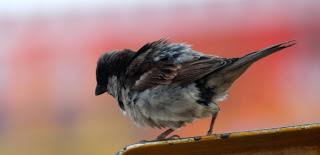Monkeys of Tamil Nadu
It's been
a while since I left the habit of writing blogs. To revive that I have decided
to write this blog.
For the
past 7 years I have been into photography and my love towards nature and
wildlife photography can’t be expressed in words.
In this
blog I am going to share my view on my friends from the wild namely The Bonnet
Macaque, Grey Langur and the famous LTM (Lion Tailed Macaque). These three have
their own uniqueness in every aspect of their daily life.
Monkeys are very common to see in India especially the Bonnet Macaque can be spotted easily in the Southern parts of India.
India is a country consisting of various culture, tradition and languages. Monkeys generally in India are referred as both as incarnation of God Hanuman and they are also referred as our ancestors due to their characteristic behaviour.
Bonnet Macaque (Macaca radiata)
It is the
commonly seen monkey in Tamil Nadu. These are predominantly seen in the hilly
areas of Tamil Nadu. I have taken some pictures of them in the areas namely
Manjolai, Mel Nambi Kovil , Kalakad Mundanthurai Tiger Reserve, Karaiyar and
near Sorimuthu Nainar Kovil.
The
Bonnets are 35-70cm long and they are in dusky or yellow in colour. The
key characteristic thing about them is their facial expression which made me
thing that this is the reason that people say that humans came from monkeys.
These can
be mostly spotted in hilly areas of Tamil Nadu in large group. These large
groups will definitely consist of minimum of 3 families with cute small babies.
As I said early, they are known for their facial expressions and they are the
perfect models for photographers in the wild.
Now let’s
talk about the small ones. They are literally mesmerizing to view and the
activities they do will pull us to our childhood memories and personally I like
the little ones when they play with their brothers and sisters with a lot of
fight and naughtiness with maximum energy.
As I said earlier these upcoming photos will reveal the actual faces of the monkeys
 |
| Planning for the next meal |
 |
| Waiting for some more |
 |
| Got it |
The above
two photos perfectly represents the connection between them and our self.
 |
| Mom's love |
After
taking the above four photos I felt myself in the small monkey. During my
childhood I would do the same activity that the small one did. My mom would be
sleeping with her big snoring sound, which makes me also to go and lie with her
and sleep.
 |
| group photo... say cheese.... |
 |
| Twins in the wild |
 |
| The perfect human look |
 |
| Save water says the monkey |
 |
| Its bit unhappy to see this photo. Look what plastic is doing to the environment |
 |
| Time for family photo |
 |
| Please do look at this photo carefully |
 |
| Do the photographer look like an outsider |
 |
| The natural spas of the monkeys |
Grey Langur (Semnopithecus)
Now let’s move
on to my next friend the Grey Langur who is also commonly seen in the hilly
areas of the Southern Indian parts of India.
They have a
silvery fur body and black face. The most magnetic feature is the pointed spiky
hairstyle of them, similarly like the Bonnet Macaques these are also very
hyperactive especially the young ones.
With
respective to to their long tails they are referred as the god Hanuman from
Ramayana according to Hindu Mythology. These are also called as Hanuman Langur.
I have taken
pics of these in the areas namely Kalakad Mundanthurai Tiger Reserve
and near Sorimuthu Nainar Kovil.
 |
| Looking out for predators |
 |
| Seriously an old man's look |
Lion Tailed
Macaque (Macaca silenus)
Lion Tailed Macaque(LTM) is the endangered
monkey species among this three and it is seen in hilly areas of the Western
Ghats.
LTMs have a black furry body and grayish furry
area around it's face. It is not like the other two, it is highly sensitive
towards human being.
I had the
opportunity to see them not take pictures of them in a high canopy in
Parambikulam Tiger Reserve in the year 2012. I only had the opportunity of
clicking pictures of it in Anna Arignar Zoological Park near Chennai during a
wildlife photography workshop in the year 2019 with Rathika Ramasamy Mam.
 |
| King of the gang |
Thank You








































